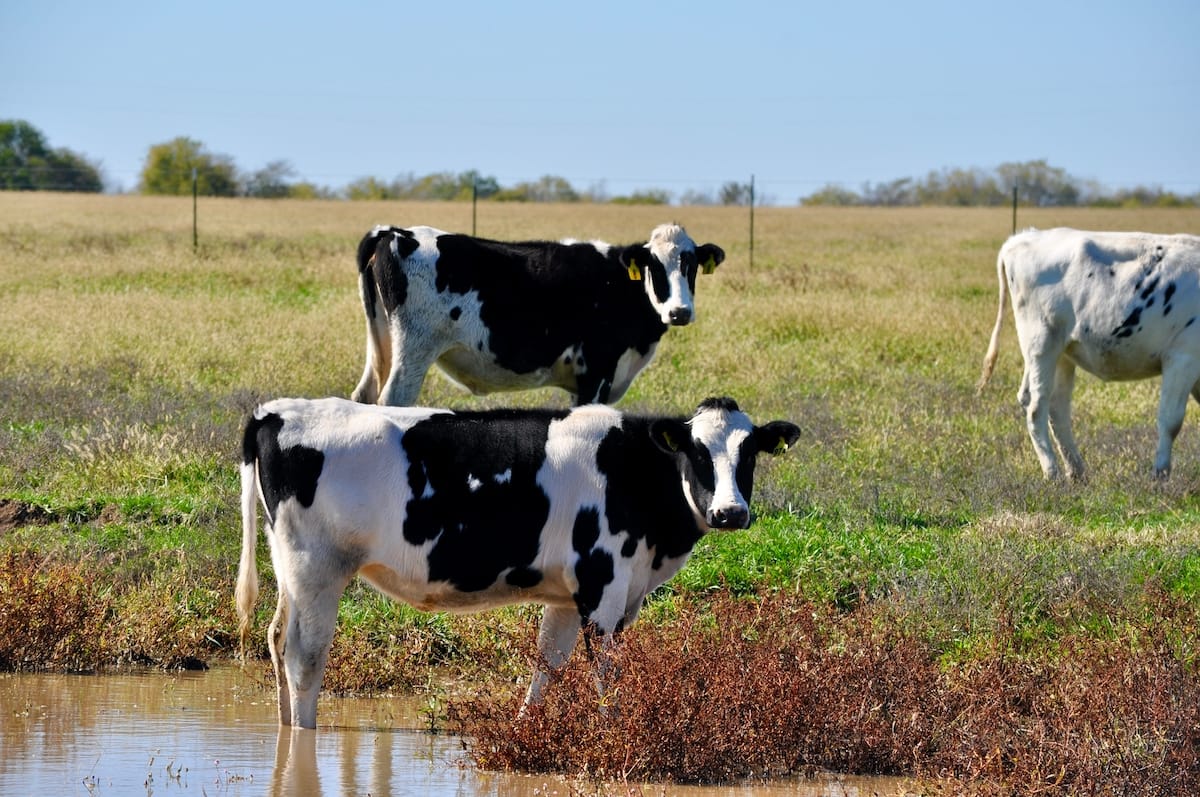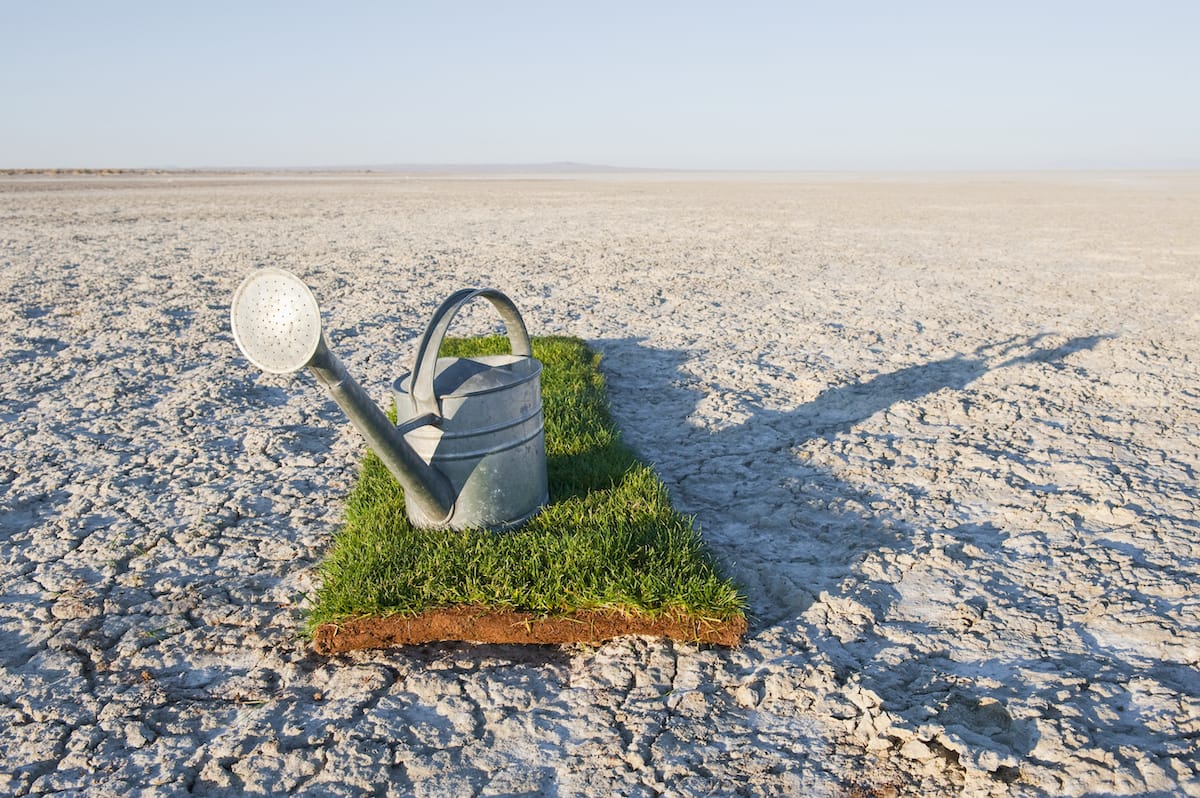Article Summary:
As summer heat gnaws upon us, it's become exceedingly important to provide the cattle with standard drinking water. Impure and substandard water can cause health issues and prove to be a financial burden to your farm. Water quality standards ensure that livestock drinking water meets certain requirements in terms of temperature, salinity, alkalinity, and hardness. After all, we all deserve high-quality standard water.
“I am thirsty,” says your cow. This is one feeling we can understand best, especially when the hot summer sun is burning our heads.
Well, since cows cannot twist their tongue to state how thirsty they are. They have developed certain methods to let you know they need quality water. These are drying of mucous membrane and eyes, tightening of the skin, weight loss, reduction in milk production, loss of body condition, heat stress, lethargy, and the list goes on. BTW, if dehydration prolongs, cows may kick the bucket altogether.
Providing good quality water is crucial for livestock health. When it comes to cows, they are taste and quality conscious. They may consume less water if its quality is not up to the mark which can lead to serious health issues.
It’s hot today, so we will discuss why we need standard water. We will also delve into the composition of healthy water, and make recommendations to acquire good water for good farms.
Bonus point: Cows are very insightful. They know water changes physical form at low temperatures. When they are thirsty in winter, they may eat ice to keep themselves hydrated. Impressive!

Why do we need a water standard?
Water comes from various sources; surface sources like dams, rivers, channels; underground sources like bores and wells; or municipal supply. Water quality is affected by;
- Chemical composition; pH and the concentration of certain elements, heavy metals
- Physical characteristics; turbidity, suspended solids
- Biological factors; the presence of unwanted organisms, algae, viruses
The standards of livestock drinking water are different from those of irrigation. For example, river water may be good for irrigation but if it contains excessive sediments, it may not be suitable for livestock drinking.
When we talk about the standard or quality water, we are looking to achieve the following objectives:
- Livestock water intake will not reduce
- No negative impacts on health and body condition of livestock
- The animal performance will not go down
- Negative impacts of foreign elements will not transfer from animals to people
- Sustainable supply of water
Mandatory requirements for Standard established
To address the stated concerns of water quality assurance, there are mandatory requirements farms ought to comply with. These standards ensure the health and wellbeing of livestock and help farms thrive. These are;
- Australian Animal Standards and Guidelines for Cattle (DAFF, 2013)
- National Guidelines for Beef Cattle Feedlots in Australia (MLA, 2012a)
- National Feedlot Accreditation Scheme (AUS-MEAT, 2013)
- Australian and New Zealand Guidelines for Fresh and Marine Water Quality – quality standards for beef cattle drinking (2000) (ANZECC and ARMCANZ 2000)
Other than these, codes, rules and regulations established by the local authorities and relevant states ought to be complied with.
Composition of water; Assessing water quality
Water quality for livestock is assessed before and during use. Water quality testing based on physical properties checks the water for any unwanted taste, odour, turbidity or high temperature. Testing of water quality for chemical properties determines if the toxic substances or nutrients are present in quantities more than recommended. Furthermore, water is tested to find out the levels of microbiological agents and unwanted organisms which may cause an outbreak on your farm if left untended.
Assessing water for the presence of unwanted substances is relatively easy. However, finding the levels at which these substances would not damage animal health is tricky. We recommend consulting an expert or nutritionist for conducting site-specific tests.
Below are the factors that determine whether the water is healthy for cows or not.
Temperature
Just like us, cows are not fond of hot water. In summer, they prefer cool water to maintain their body temperature. The daily intake of water in the warmer season increases significantly.
- Cows require water at the optimum temperature of 16-18 C to boost their performance.
- If the water temperature rises above 25 C, the cow’s intake of water also rises sharply as a result of sweating, panting, and increased respiration.
- If the water temperature shoots above 30 C, the cows start drinking water at least every two hours.
It is better to provide the cows with cool water. Some ways to keep the water cooler at your pasture are:
- Allow evaporative cooling of ponds. Draw water from the bottom of the pond.
- Put covers on water storages and tanks to keep out direct sunlight
- Burry the water pipelines beneath. This will keep the water cool.
- Install water troughs of smaller capacity with high water turnover
Acidity/Alkalinity
Buffering capacity of water is called alkalinity. It shows how much capacity a water body has to resist acidification. High levels of alkalinity mean water has high levels of calcium carbonate (CaCO3), bicarbonates or hydroxide ions. In simple terms, alkalinity is the water’s ability to neutralize an acid.
Alkalinity measure gives information about the different salt types present in water. Safe levels of alkalinity are not defined precisely. However, there is a safe range expressed as the concentration of calcium carbonate in milligrams per litre of water.
To treat physiological and digestive problems resulting from the intake of highly alkaline water, acid ions are used. We recommend consulting a vet or nutritionist to avoid any complications.
On a scale of 1-14, a water pH of 7 is considered neutral. Water pH of less than 7 indicates acidity while a value above 7 indicates alkalinity. The pH of 1 represents the highest level of acidity while a pH of 14 represents the highest level of alkalinity.
Cows are alright with pH levels 6.5 to 8.5. This range has little effect on rumen pH. Any levels above or below should be analysed and carefully evaluated to avoid any negative impacts on the cow's performance.
- Calcium Carbonate levels
- Good quality water: concentration less than 500 mg/L
- Poor quality water: 500-1000 mg/L (cows can still tolerate it)
- Extremely bad quality: concentration above 1000 mg/L (leads to physiological and digestive problems and need treatment)
- pH Levels

Salinity
Another parameter to test water is Total dissolved solids (TDS); the sum of all solid substances dissolved in water. Salinity indicates the concentration of dissolved salts in water. These salts are, primarily sodium chloride. Other salts may be, carbonates, nitrates, sulphates of calcium, magnesium, and potassium.
The salt concentration is measured in parts per million (ppm). Another parameter is to measure the electrical conductivity of water in deci-siemens per metre (dS/m).
1dS/m = 640 ppm
Cattle cannot tolerate sudden changes in the salinity of the water.
According to ANZECC guidelines;
- TDS concentration for the healthy growth of beef is 4000 ppm.
- TDS concentration at which good condition can be expected; 4,000 to 5,000 ppm.
- The maximum concentration safe for short periods is 5,000 to 10,000 ppm.
Keep in mind, cattle are more sensitive and less tolerant to salinity levels during the hot season. High levels of evaporation increase the salinity level in the water. It is recommended to check the salinity levels frequently and change the water in troughs regularly. This would prevent the accumulation of salts.
Also, pasture management should consider the salt content of water when planning the summer rations to avoid the increase in the salt content of the feed.
Hardness
Hardness is a measure of the concentration of calcium and magnesium in water. Hardness alone is not problematic for livestock. However, high levels of harness combined with high levels of salinity can be detrimental to cows. Water hardness is termed temporary if it is caused by carbonates only, and permanent hardness if it is caused by non-carbonates.
Temporary hardness can be removed by boiling the water. Permanent hardness requires other treatments.
Hardness is expressed as CaCO3 mg/L. It is different from salinity as the hardness is a measure of divalent cations (++ charges).
- Soft water: 0 to 50 mg/L of CaCO3
- Moderate water: 51 to 75 mg/L of CaCO3
- Moderately hard water: 75 to 150 mg/L of CaCO3
- Hard water: 150 to 300 mg/L of CaCO3
- Very hard water: >300 mg/L of CaCO3
Hard water poses problems for pipelines as it restricts the flow of water by the accumulation of white mineral deposits. Softening agents are used to avoid making this white mineral.
Let us continue this discussion on water quality parameters in part-2 of this enlightening blog. We will discuss how toxic compounds, nutrients, microbial content, radiological elements, and pesticides adversely affect water quality. Be sure to take away valuable info :-)
For more animal health articles check here.
Until we meet again, Happy Drinking!
- The Dedicated Team of Pasture.io, 2021-12-01